
By Sherry Bunting
CLOVIS, N.M. — “Who will train our next generation?” That has been the concern of New Mexico State University extension dairy specialist Dr. Robert Hagevoort and colleagues in other university programs where college dairies have closed their doors over the past five to 10 years.
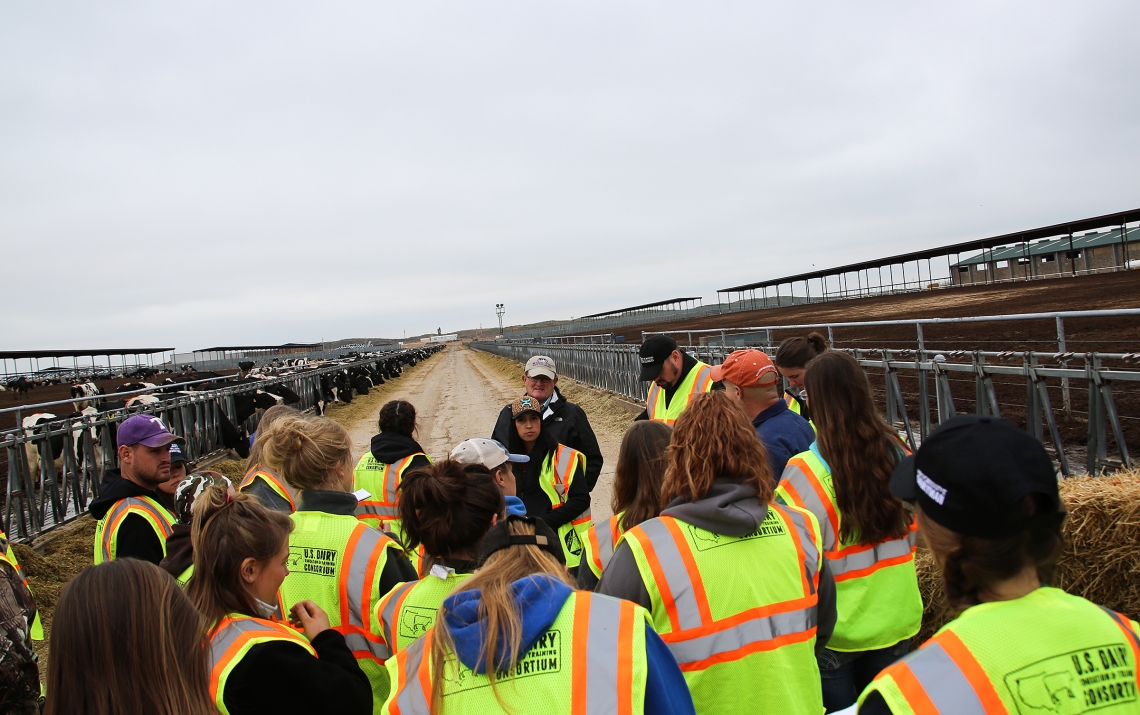
“This program is starting to resonate, and the numbers of students taking advantage of it are increasing,” he observed about the U.S. Dairy Education and Training Consortium (USDETC). The program has evolved over the past decade to provide first and second year components during six-week sessions annually from mid-May through June.
“I’m always running into former students who have gone on to manage herds, become nutritionists, AI specialists, or reps for companies,” Hagevoort relates. “This program is making a difference. It facilitates a future by opening eyes to dairy systems and helping students see themselves in potential roles. Some will come here with no dairy background and go on to manage dairies. They had it in them, and their connection to the program helped bring it out. Some students will learn this is not for them, and that’s okay too.”
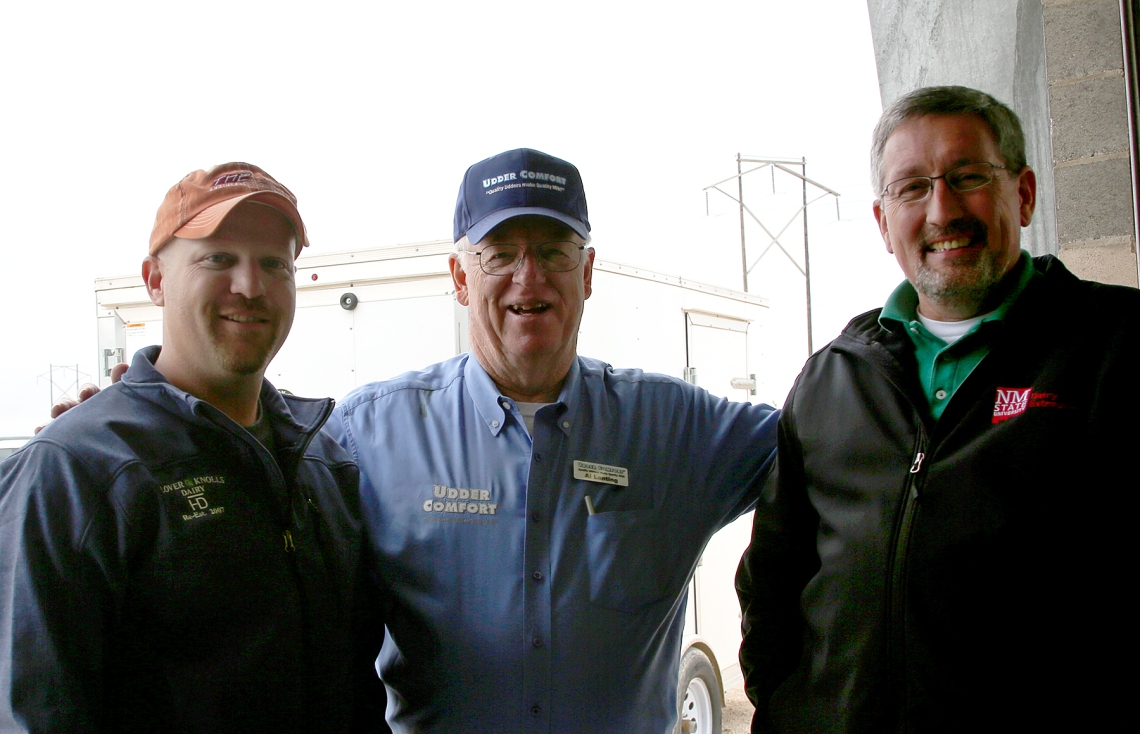
First-year USDETC students visited Clover Knolls Dairy, owned by Tio and Chyanne Ford near Texico, New Mexico, during the second week of the 2016 session. Ford walked them through the operation and his management protocols.
The nearly 3000 cows milking at Clover Knolls produce 88 pounds/cow/day of milk that is consistently at or below 100,000. This is up from prior years around 85 to 86 pounds.
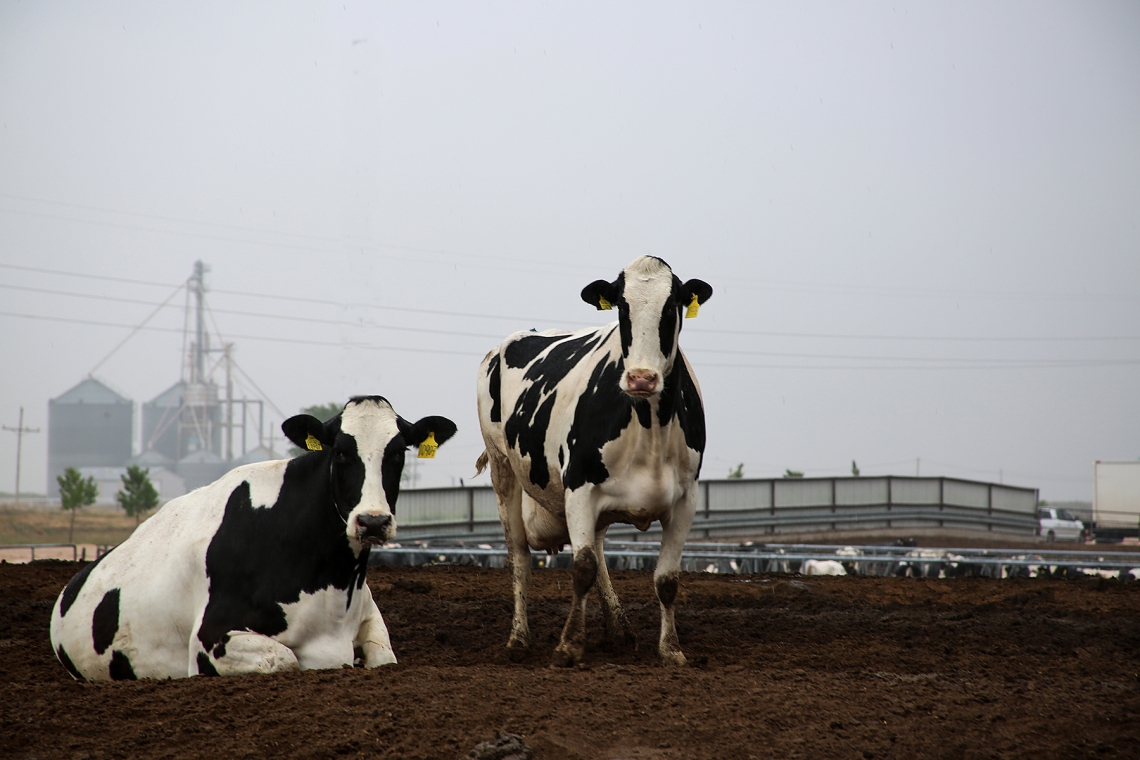
Along with the tour and learning stations, the students had lunch provided by Udder Comfort International through area representative Al Lanting. Since Clover Knolls ships as a member of Select Milk Producers, Lanting worked with Select to provide their milk beverages. The students were anxious to try Select’s assortment of Fairlife, CorePower and the new Yup ultrafiltered flavored milks.

“We work with producers and industry sponsors to get the students out on dairies to listen to producers and see, firsthand, how they run their operations and manage their herds,” Hagevoort explains. The goal is “total immersion” in large herd dairy management with producers, industry representatives as well as experts from dairy program universities from coast-to-coast.
Operating out of Clovis Community College, the students spend mornings visiting nearby dairies with a range of management styles, focusing on different aspects of dairy management each week. They return to the classroom in the afternoons to discuss, debate and be tested with subject matter experts on the topics related to dairy management.
“This is what we used to do with the dairies at universities, but now we work with producers to provide the real-life examples,” Hagevoort explains. They learn milking protocols, cow flows, calf care and housing, and to feed, breed, and treat cows as well as the business decisions dairy owner/ managers are faced with.
They also learn whether or not this is something they want to do, or find direction into other dairy-related careers.
During the session at Clover Knolls, for example, Ford touched on some of the challenges the dairy has faced beginning with its re-start in 2007 when Ford’s wife’s parents bought out their previous partners and brought Tio and Chyanne in to take over. While Ford grew up in one of the region’s century dairy farms, Chyanne’s parents Doug and Irene Handy left the cold winters of Meadville, Pennsylvania in the 1950s to start what would later become their own 3000-cow Do-Rene Dairy near Clovis.
Ford talked about the freak Winter Storm Goliath that hit both Clover Knolls and Do-Rene last December. Since then, they have worked together on cow flow because both operate closed herd dairies, not wanting to buy-in replacements after the storm.

“We are content to be milking 200 to 250 fewer cows after the storm, and found through this process, we are shipping more milk while using less feed, less water, less labor,” Ford related. With the use of sexed semen and a successful heifer raising program, Ford has had enough heifers calving-in to send many of them to Do-Rene to replenish their numbers after substantial storm losses.
At Clover Knolls, cattle are sorted and moved daily with closeups moving to the calving area and post-fresh cows to the fresh pen at the lower end of the dairy by the hospital parlor. They are milked there for their first six to eight milkings before heading to the main pens and parlor.
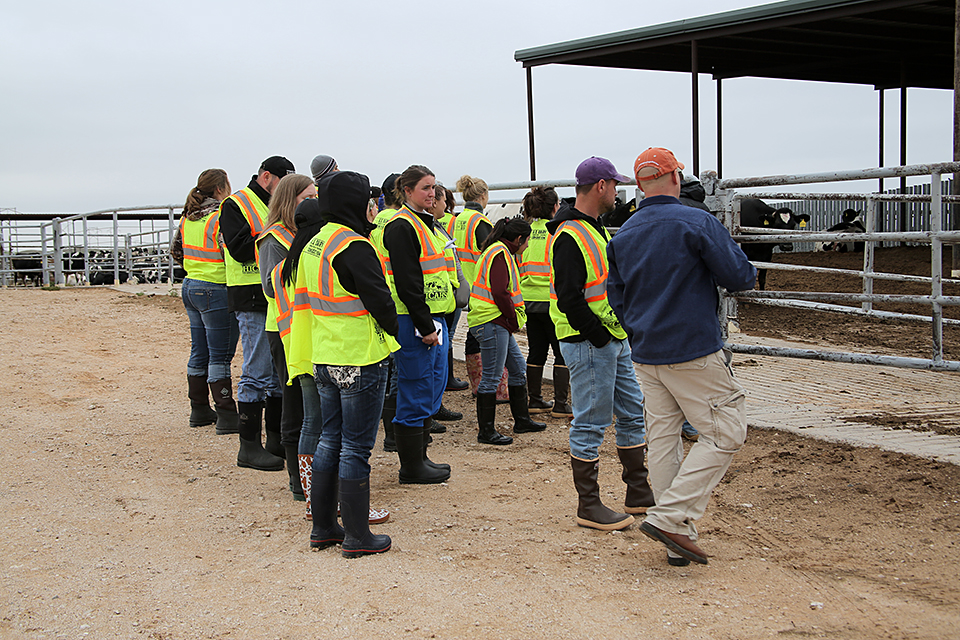
Ford allows calves to nurse one time and then separates the calves and marks the cow with her calving date for easy identification of where she should be in cow flow and health-watch.
In the hospital parlor, an Udder Comfort Spray Gun has been set up to apply product to the center cleft from front to rear after each of those first six to eight milkings.
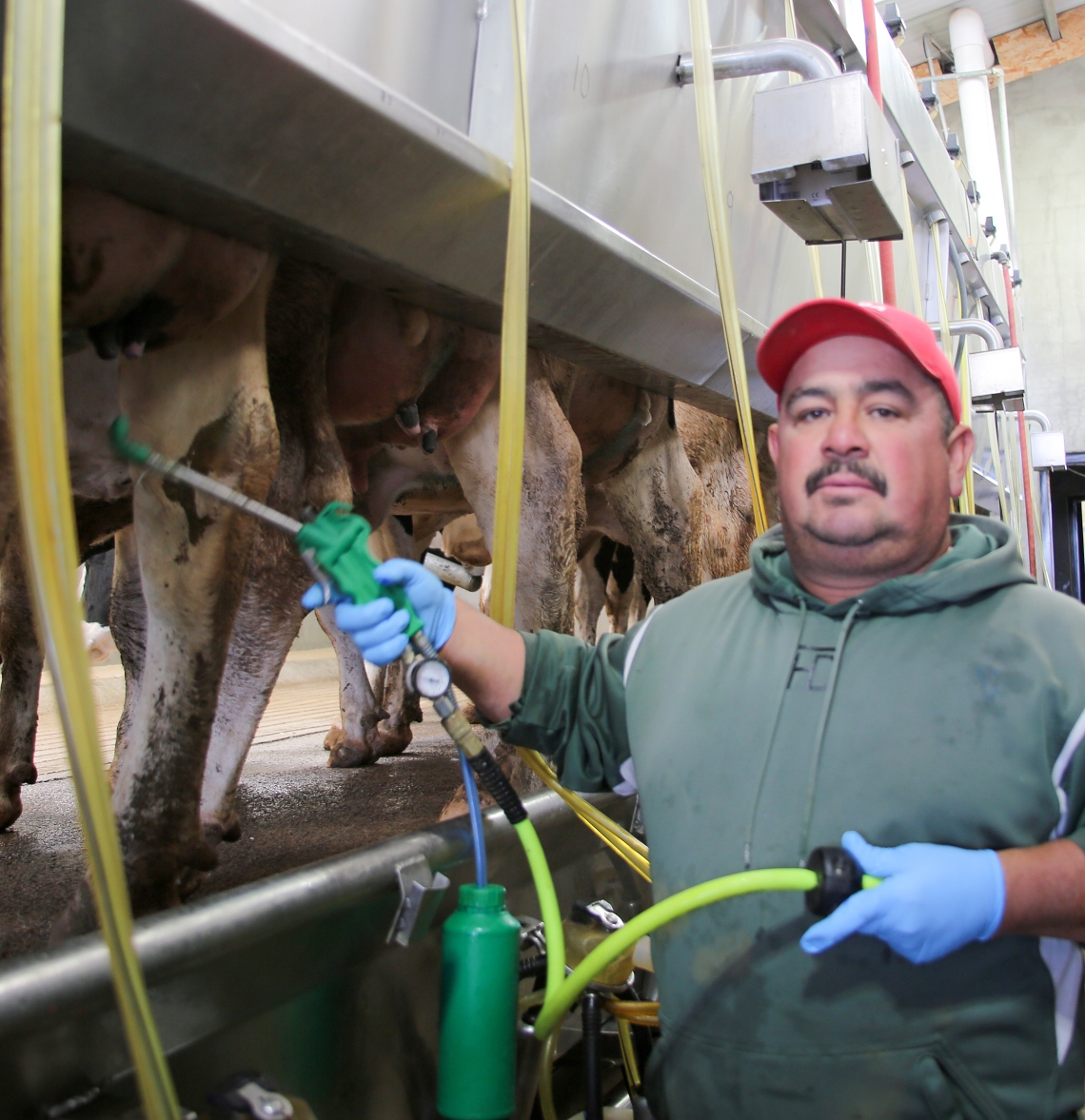
“This primes the fresh animals, and definitely helps get their udders headed in the right direction,” said Ford. “Our key is to get them out of the starting gate without issues. We’ve seen a real benefit, and the spray gun system is simple, fast, and helps us conserve how much of the product we need to use to meet the objective.”
Ford likes to keep things simple, without a lot of extras. Simplicity applies to the parlor itself — a plain double-20 that turns 10 times per hour — and simplicity applies to the protocols on the dairy.
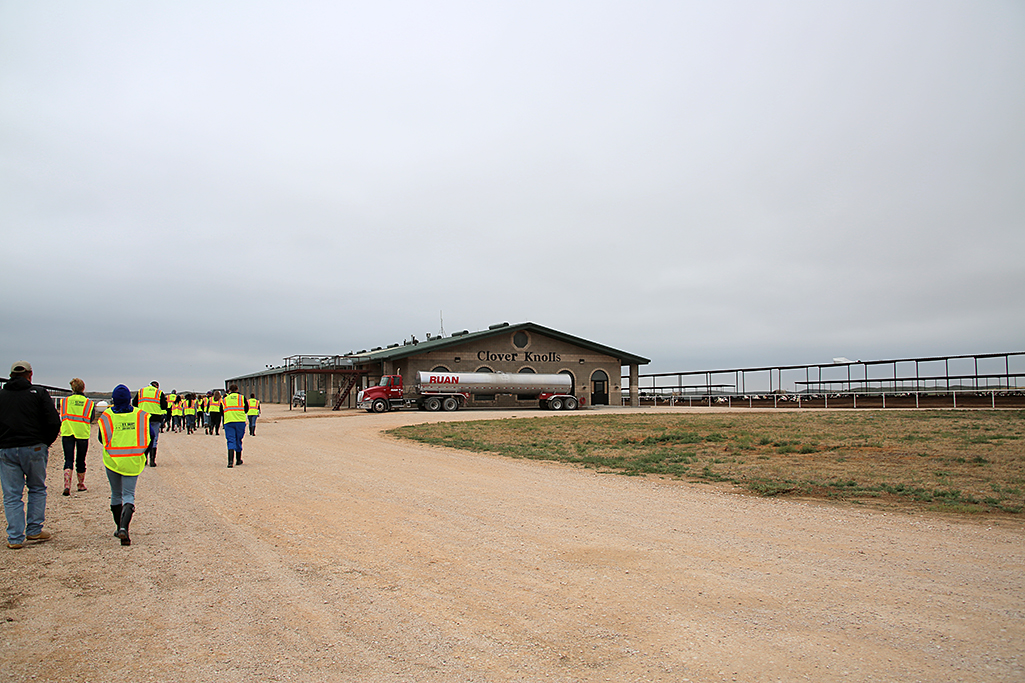
“Managing a dairy, we find that 90% of our problems are when employees don’t have protocols that are simple to implement and follow-through consistently,” he explained. “Dairies all have the same issues to work through. The typical problems are just bigger on a larger dairy because there are more cattle and more people doing the work.”
He keeps a simple udder prepping protocol, and adjusts the use of pre- and post-dip to account for changes in the weather when the normally dry conditions can turn muddy after rain.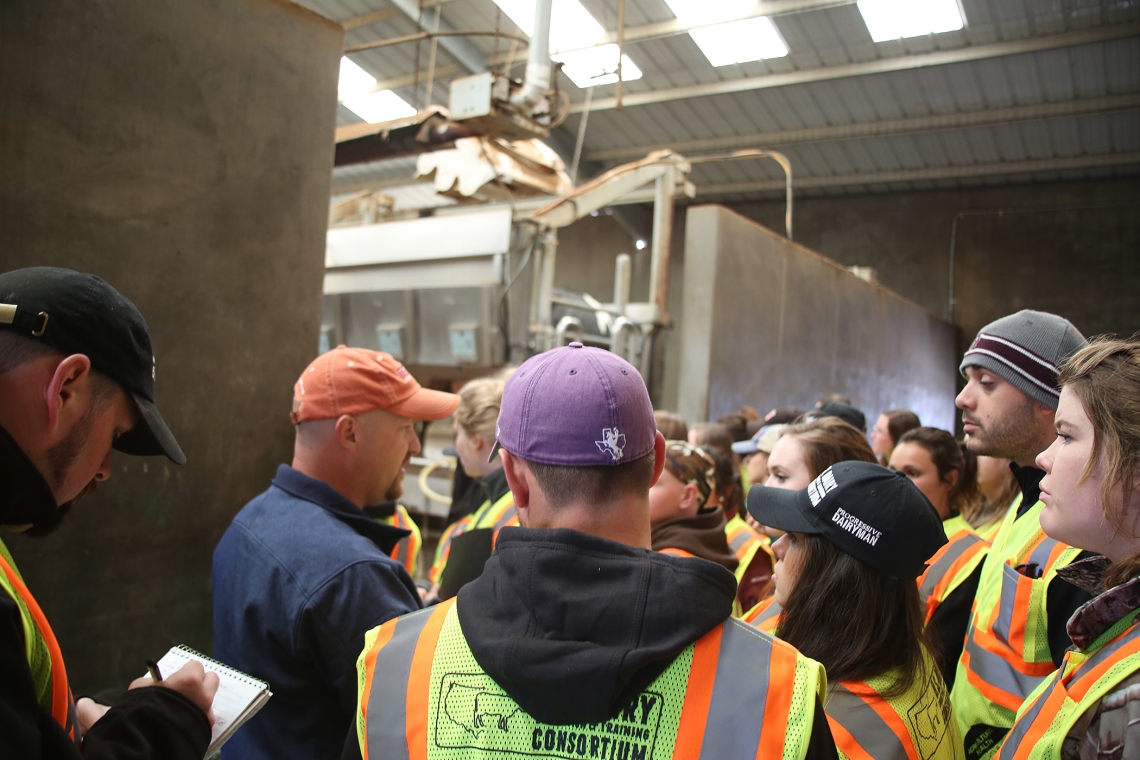
“We use a pre-dip cup when it’s rainy and we spray the teat-dip under normal dry conditions,” said Ford on what was a rainy day. Unlike other session visits, the 2015 and 2016 students saw this southwest dairy region contending with a rainy week and plenty of moisture, whereas in 2012, 2013 and 2014, the prolonged drought painted a different picture – drier drylots, less udder prep, but also greatly reduced crop yields and high-priced feedstuffs.
Ford talked about growing and feeding corn silage and sorghum silage and how every drop of water that falls on the dairy gets used, and how all water associated with the dairy is recycled six times before reaching the fields as irrigation.
Adequate bunk space is also important, and he gives more space between lockups for closeup cows, with the main pens at two feet between lockups and the closeup pen two-and-a-half.
Ford is big on fresh feed.
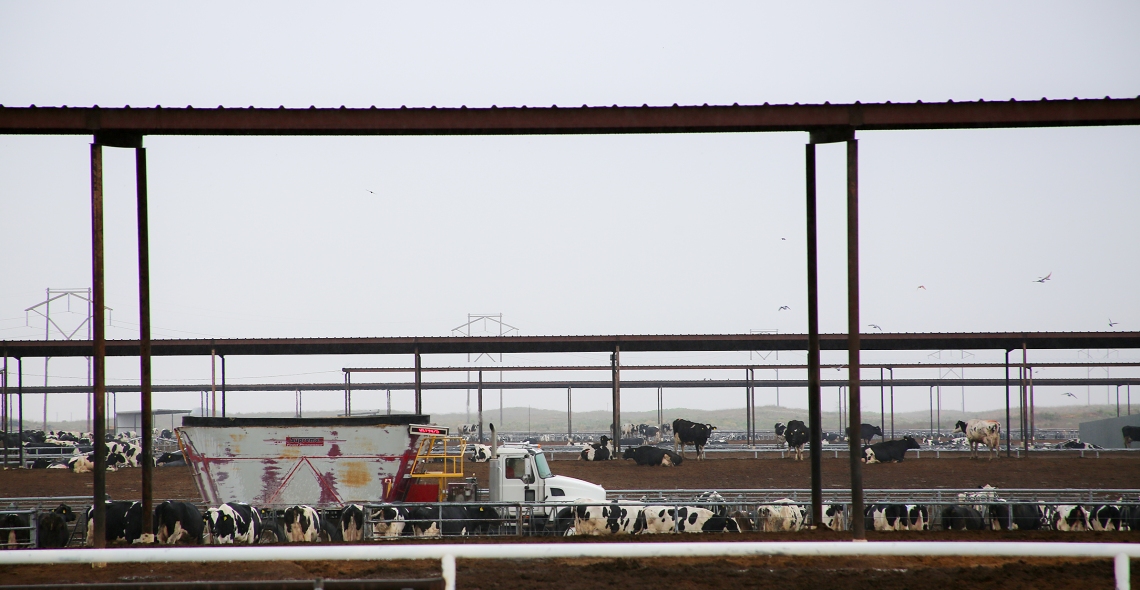 He does five to seven feed drops a day and cleans up feed twice a week — more often when it rains. He also leaves lot hay at the end of each pen for cows to regulate themselves and their own digestive health. When it comes to rations, he gets a bit more detailed, feeding four rations: a special ration for the fresh cows, a high cow ration, a general ration and a late lactation / low cow ration.
He does five to seven feed drops a day and cleans up feed twice a week — more often when it rains. He also leaves lot hay at the end of each pen for cows to regulate themselves and their own digestive health. When it comes to rations, he gets a bit more detailed, feeding four rations: a special ration for the fresh cows, a high cow ration, a general ration and a late lactation / low cow ration.
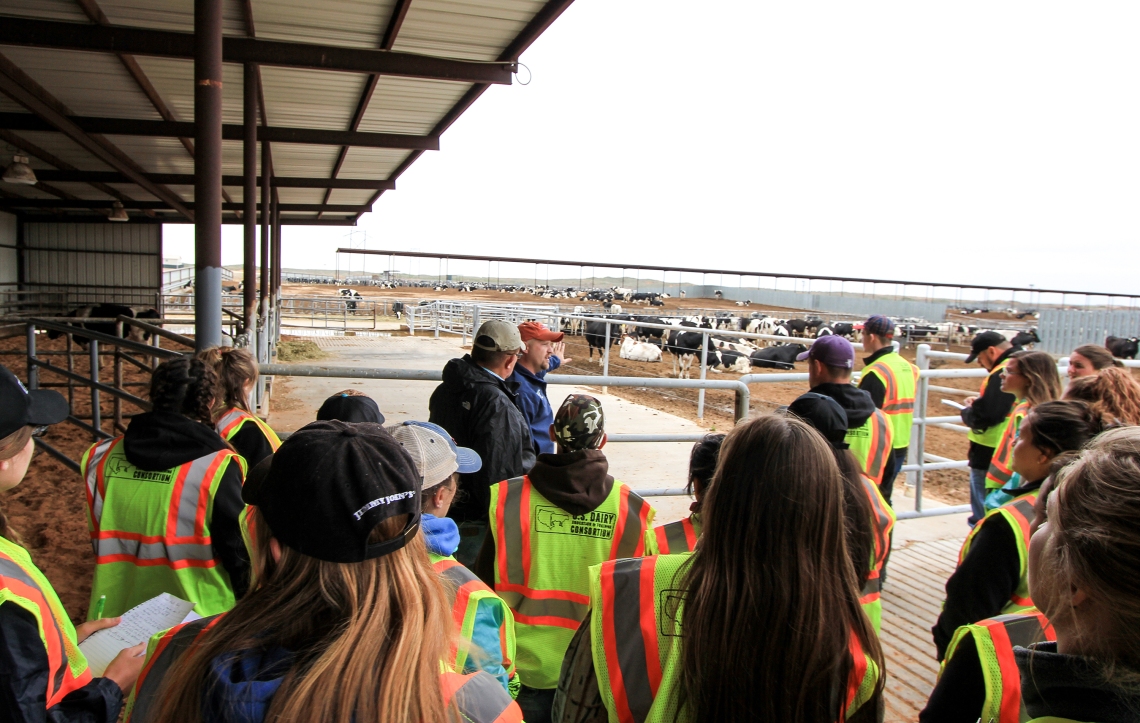
Pens are also spacious in an open drylot setup. Space becomes even more important in wet years. “You don’t want cattle stressed by space issues,” said Ford, who provides 600 square feet of pen space per cow on average. “We don’t stock to the max here, particularly in the last two years where we have had more rain.”
He commingles his cows and heifers in closeup and fresh pens, but separates the heifers once they get to the main group pens to help with aggressiveness issues. Ford also likes to use a buddy system in the sorting process. “Cows like to have buddies,” he said.
Students who enroll in the USDETC typically hail from the western states of New Mexico, Texas, Oklahoma, Colorado, Kansas, Idaho, Arizona, Oregon, Washington, North and South Dakota and California. In addition a few students show up every year from the eastern and midwestern states of Pennsylvania, New York, New England, Maryland, Virginia, Georgia, Florida, Kentucky, Tennessee, Ohio, Michigan, Indiana, Illinois, Iowa, Minnesota and Wisconsin, as well as from Canada and other continents, including Europe, South America, and countries like Thailand, Australia and New Zealand. A team of students came this year and last with their instructor from Cal Poly as well.
Subject matter experts come from universities across the U.S., including, for example, from Penn State Lisa Holden on human resources and Chad Dechow on reproduction and from the University of Illinois, Mike Hutjens on feed efficiency.
For more information about the USDETC program, click here
By Sherry Bunting, reprinted from Texas Dairy and Ag Review, Farmshine


1 Comment